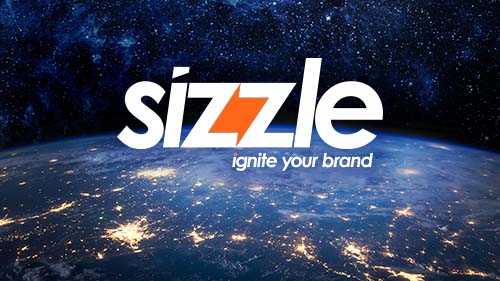Launching a new company or project has many options available to the creators of the project. The trend seems to have evolved from the costly IPO to the ICO, which evolved into the IEO and has now emerged as an IDO. The distinctions between each of these are very important and disparate by design. The IDO has emerged as the favorite new method of fundraising.

INITIAL PUBLIC OFFERING – IPO – raises capital for a new company when it first enters the stock market. Initial public offerings allow startups and established companies to go public. They require extensive formal procedures that are very expensive and logistically challenging in order for a company to go public and be listed on a stock exchange. Special counsel must be hired to file all of the requisite paperwork with the SEC (Securities and Exchange Commission), including a prospectus containing financial statements and any risk factors that potential investors need to see to validate their investment. A startup using an IPO can increase their visibility in the marketplace and give them access to hire top talent and boost their reputation as they build a name in the marketplace. Between the underwriting and reporting fees, strict regulations, filing costs, a new company opting to go public could burn through a lot of capital on the path of six months or more to going public. Once the company has gone public, the pressure for high performance on the company has only just started and this added pressure on a new company also creates significant risk.

INITIAL COIN OFFERING—ICO – A method for the issuance of cryptocurrency or electronic money for the first time on the market at a discounted price to raise capital. As crypto went mainstream in 2017, the early vogue was for companies to sell a percentage of their tokens or coins to the public. The initial response was very popular, generating a combined capital raise in excess of $4.87 billion in the first year, making them a ripe target for scams of numerous kinds and thereby tarnishing the opportunity and decreasing their popularity. The ICO is a form of issuing cryptocurrency or electronic money for the first time on a market at a discounted price to raise capital. ICOs are usually used to launch a new service or product in the cryptocurrency market, typically a new token. It is relatively easy to start and set up an ICO in comparison to STOs and IEOs. To launch an ICO, the company needs a white paper, a website to support the company, and identify the team that will execute on the project described in the Whitepaper. The relative cost of launching an ICO is low, making it more suited for new investors in the market seeking to make a small investment. An ICO requires minimal government intervention and delivers more liquidity in a short period of time. Investors retain complete control over their money. Funds in an ICO can be raised through bounty programs, private and public sales and Airdrops. A core disadvantage to the ICO is security, making it a ripe target for scams and malicious behavior.

INITIAL EXCHANGE OFFERING—IEO – A form for issuing tokens on centralized exchanges such as Binance or Okex in which projects directly issue their tokens on the exchange to individual investors. Similar in concept to an ICO, the IEO arose in 2018 as the proposed solution to the weaknesses in the ICO model. IEOs are launched on a centralized exchange to facilitate the tokens being listed on an exchange to prevent scamming of investors. In the creation of significant barriers to doing an IEO, the risk to investors decreased considerably, creating trust throughout the greater crypto community. The IEO was a considerable improvement on the ICO and gave way to blockchain darlings Polygon and Elrond. The centralized exchanges provide regulatory KYC (Know Your Customer) and AML (Anti Money-Laundering) services for which they collect a high premium for the services rendered. An IEO can fail because the crypto exchanges are not purchasing the full lot of tokens and reselling them. One of the most severe downsides of an IEO was the centralized nature of such a launch, with an intermediary deciding which projects should be approved and extracting a fee for the privilege. In addition, funding costs are very high, the system is difficult to set up, liquidity is very low compared to ICOs and IDOs and investors have very little control over the operations of the exchange. Centralized exchanges impose strict ground rules which include the payment of large sum or offering a portion of the tokens to the exchange, prohibiting the project from listing themselves on other exchanges, and leaving a small leeway in controlling the parameters of a project’s token sale. It’s essential to remember that ICO tokens are minted after the sale. It takes place on the company’s website. It all costs a lot since the issuer will need an exchange listing, which costs from $100,000 to a few million dollars.

INITIAL DEX OFFERING—IDO – This is the first form of token issuance on a decentralized exchange (DEX). IDOs can be created for anything from a music album, to a new cryptocurrency, to a global trans media omniverse network like Sizzle. Separating them from both the ICO and IEO fundraising models, IDOs can be autonomously carried out by the token project and listed without complete trust on a decentralized exchange. As many DEXs accept a variety of wallet types, it also simplifies the user experience.
IDOs, therefore, deliver a more cost-effective, non-custodial method of token listing, offering quick liquidity and instant trading with low slippage through liquidity pools on a variety of decentralized exchange platforms with significant user volume. The decentralized constructs of the exchanges used in an IDO created a new attraction in 2019. The IDO is the ICO and the IEO in one, but the centralized exchange is replaced by the decentralized exchange. By eliminating the complications and needless expense of paying a middle man by working with centralized exchanges, they are becoming the most favored concept for launching tokens and raising funds. In contrast to the ICO, where tokens are sold before an exchange listing, tokens in the IDO are listing on the DEX through which they’re launched, saving project developers from having to collect assets for pools. In an IDO, the pool is created on a DEX after the IDO is conducted through a third party or their own launchpad. This model continues to find increased favor as more and more crypto projects were raising funds through liquidity pools without intermediaries. This enables investors to benefit from instant token trading, which creates faster potential liquidity for an investor who was seeking that while still enabling the crypto projects to raise money quickly without the frustration of collecting assets for a pool. In an IDO, the token-issuer is responsible for their own marketing as well as the creation of the smart contract that will sell tokens. They are responsible for their auditing needs/requirements as well as any legal vetting. Most IDOs will outsource their AML and KYC compliance, as well as any general securities offering registration requirements. Token projects and buyers retain control over their own funds at all times, instantly secured using their own wallets and private keys without having to transfer in and out of a centralized exchange. As many DEXs accept a variety of wallet types, it also simplifies the user experience. IDOs, therefore, deliver a more cost-effective, non-custodial method of token listing, offering quick liquidity and instant trading with low slippage through liquidity pools on a variety of decentralized exchange platforms with significant user volume.
IDOs, therefore, deliver a more cost-effective, non-custodial method of token listing, offering quick liquidity and instant trading with low slippage through liquidity pools on a variety of decentralized exchange platforms with significant user volume. The decentralized constructs of the exchanges used in an IDO created a new attraction in 2019. The IDO is the ICO and the IEO in one, but the centralized exchange is replaced by the decentralized exchange. By eliminating the complications and needless expense of paying a middle man by working with centralized exchanges, they are becoming the most favored concept for launching tokens and raising funds. In contrast to the ICO, where tokens are sold before an exchange listing, tokens in the IDO are listing on the DEX through which they’re launched, saving project developers from having to collect assets for pools. In an IDO, the pool is created on a DEX after the IDO is conducted through a third party or their own launchpad. This model continues to find increased favor as more and more crypto projects were raising funds through liquidity pools without intermediaries. This enables investors to benefit from instant token trading, which creates faster potential liquidity for an investor who was seeking that while still enabling the crypto projects to raise money quickly without the frustration of collecting assets for a pool. In an IDO, the token-issuer is responsible for their own marketing as well as the creation of the smart contract that will sell tokens. They are responsible for their auditing needs/requirements as well as any legal vetting. Most IDOs will outsource their AML and KYC compliance, as well as any general securities offering registration requirements. Token projects and buyers retain control over their own funds at all times, instantly secured using their own wallets and private keys without having to transfer in and out of a centralized exchange. As many DEXs accept a variety of wallet types, it also simplifies the user experience. IDOs, therefore, deliver a more cost-effective, non-custodial method of token listing, offering quick liquidity and instant trading with low slippage through liquidity pools on a variety of decentralized exchange platforms with significant user volume.

LIQUIDITY POOL – Decentralized exchanges (DEX) use liquidity pools to engage with tokens that are locked in smart contracts to increase the market liquidity. The result creates lower transaction costs for traders, creating more efficient asset trading in the process. The liquidity pools are a critical component of a majority of the crypto concepts, including Automated Market Makers (AMMs), on-chain insurance, and borrow-lend protocols. Each pool most usually consists of two tokens, for example ETH/USDT, rather than order books. This means that the price will only vary if the token is bought or sold and the ratio of tokens in liquidity pools is changed. As a new pool is created, liquidity providers must contribute a predetermined quantity of each of the two tokens according to a predetermined ratio.
THE PROS AND CONS OF AN IDO
PROS:
- Eliminates the threat of significant loss for investors to invest in an entity that has not been properly screened and cleared as legitimate.
- Significantly reduces cyber scams and thefts that were common among CEXs due to centralization.
- No permission is required to use an IDO
- Very small fee for token listing on DEXs
- Investors can access tokens through their secure wallets
- DEXs do not retain user funds, thereby reducing all risk of breeches of security
- No waiting period to trade tokens. Tokens are instantly traded in a DEX
- The majority of DEX launchpads run on community governance, removing the decision making from just a few authoritative figures
- Relies on knowledgeable community activists to vet the offerings, which strengthens the community, thereby providing a viable decentralization
- DeFi launchpads defeat the pump and dump bots by limiting buyers to a pre-approved white list with a strict per-buyer maximum. Buyers must own and retain the launchpad’s native token.
- Virtually every project can raise capital. By removing the IEO vigorous vetting process has given wider access to a greater number of projects seeking crowd-sourced capital.
- Most projects lock a considerable portion of the crowd-sourced funds as liquidity on the DEX where the token starts to trade.
- Many projects offer staking programs to incentivize holding.
- Blockchain provides complete transparency and traceability. All public token contracts can be verified in advance.
CONS
- Prices of coins are easily manipulated through pump and dump techniques of purchasing volumes to make the price per coin increase significantly, then selling a lot of the inventory held when prices are hitting a peak, causing the price per coin to drop dramatically. The reduced vetting process paired with a high demand for IDOs allows scams based on obscure projects to proliferate.
- The necessity to hold large volumes of launchpad tokens to get a sizable investment with a proper return decreases the odds of winning significant allocations due to the extreme competition and increases the need to have launchpad tokens.
- As the coins are instantly traded, tokens are swapped early on, meaning only a few investors are able to purchase the token for the price initially listed
- Despite the decentralized finance (DeFi) boom, even the top DEXs have far less liquidity than the top centralized exchanges, and are less easy to use, potentially warding off buyers in the process
- Needs strong community activists to acts as market makers. Without their involvement, prospective buyers are sometimes short of information and may be less inclined to purchase
- There is a disproportionate amount of tokens between the seed, private and public investors. Given that most IDOs will keep the majority of tokens for the team and seed/private round investors. The choice to vest over time assists in preventing a price discovery dump of the token. It is common that upon the unlocking dates per the vesting schedule are reached, large profit-taking almost always takes place. The choice to track smart contracts easily enables investors to see when the unlocking dates will take place, whether on a weekly, month or quarterly basis.
- IDOs lack a control mechanism, making it somewhat vulnerable as some level of control is necessary over a fundraising process. Furthermore, as investors swap tokens, the prices of those tokens will vary, potentially leading to whales manipulating these prices to the disadvantage of the company issuing the IDO. As a result, the token issuers will not have a clear idea of how much money has been raised during an event
- Increased clarity, scalability and control is required for IDOs to truly take the crown as the new lead capital generator in the crypto space.
The benefits to the world of DeFi for IDOs could not be more significant. The evolution from ICO to IEO and now to IDO have improved the business dynamic considerably for both the investor as well as the owners of the crypto project. The growth in the DeFi and DEX sectors are rising significantly, bearing greater benefits for the IDO burgeoning marketplace.
For help in putting your content together for your whitepaper, contact The Illusion Factory and Sizzle at Sales@sizzlesells.com to allow us to Sizzle-enable your content and make your package unique above all others.







